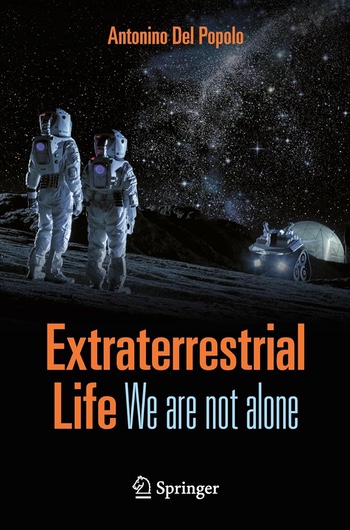Review: Extraterrestrial Lifeby Jeff Foust
|
| The challenge with this book, and the search for life in general, is that we seek certainty when the universe offers instead uncertainty. |
That happened in recent weeks with the discovery of a molecule in the atmosphere of an exoplanet linked to life: after that wave of initial coverage, some scientists noted there were alternative ways to make the molecule that did not require life, while others questioned the detection itself (see “Extraordinary claims require extraordinary evidence”, The Space Review, April 28, 2025). The same happened nearly three decades ago with Martian meteorite ALH 84001, whose claims of containing signatures of past Martian life have faded over the years.
Despite the lack of definitive detections of extraterrestrial life to date, some scientists remain convinced that life exists beyond Earth, either elsewhere in the solar system—from the upper atmosphere of Venus to the subsurface oceans of Enceladus—or in one of the billions of exoplanets beyond. That certainly is the central thesis of Extraterrestrial Life by Antonino Del Popolo, an Italian physicist, but like those earlier purported biosignatures, you may not find yourself convinced.
Much of the relatively slender book is devoted to an overview of astrobiology and related topics, such as discoveries of exoplanets and the search for extraterrestrial intelligence. (ALH 84001, for example, has its own brief section.) Most of this is pretty straightforward, with little in the way of new information or insights.
The final chapter is where the author finally delivers on the argument made in the book’s subtitle: that there certainly is other life, including intelligent life, elsewhere in the universe. But this chapter is only about three pages long, and its primary argument is manipulation of the terms of the Drake Equation to conclude that the probability of intelligent life not forming elsewhere in the galaxy or the universe to be exceedingly low: about one in 60 billion in the case of our galaxy. That is an unsatisfying conclusion that relies much more on assumptions of some values of the Drake Equation not well constrained today than on any analysis in the preceding chapters.
The book is disappointing in another respect. Despite coming from a large, respected publisher, the book is poorly edited. An example is a section about exoplanets, which discusses how the discovery of the first exoplanet around a Sun-like star was at an observatory “located on a hill and is not equipped with a very powerful telescope with a 1.93 m aperture.” Well, if it’s not equipped with a 1.93-meter telescope, what does it have? Or did the author mean that such a telescope is not very powerful? A few pages later, the reader is referred to an appendix for more discussion on “abitable planets.” One might expect such errors, along with sometimes clunky wording, in a self-published book, not one from a major publisher.
In the end, the challenge with this book, and the search for life in general, is that we seek certainty when the universe offers instead uncertainty. Conclusive proof of life beyond Earth may end up being difficult to establish: spectral lines will be scrutinized, chemical analyses will be questioned, with the result being not “yes” or “no” but instead “quite possibly” or “probably not.” The truth is out there, but it won’t be easy to pin down.
Note: we are now moderating comments. There will be a delay in posting comments and no guarantee that all submitted comments will be posted.
